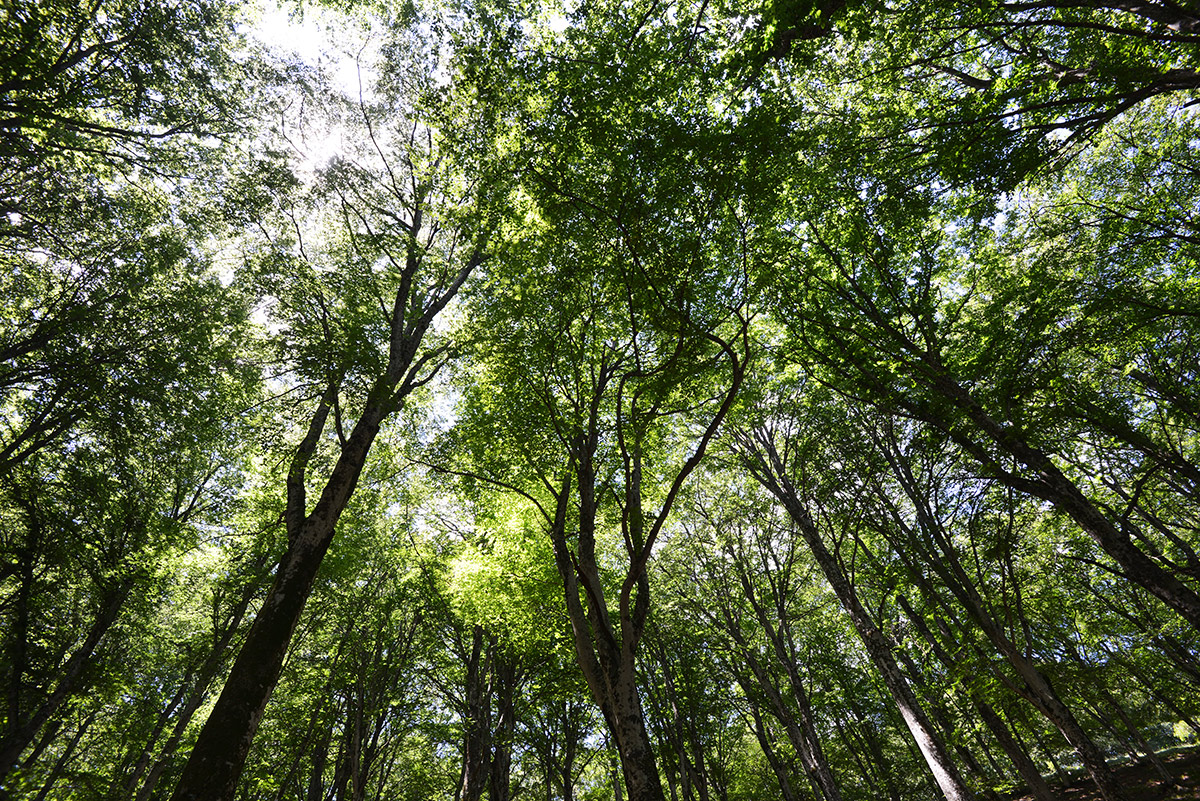It is the kingdom of the Sleeper. Looming as absolute protagonist in every corner of the regional park with the name of its main peaks, Taburno and Camposauro.
Twelve thousand three hundred and seventy hectares of beauty and wild nature, corresponding to the territories of fifteen municipalities of the Sannio in Benevento, which all together reach 25 thousand inhabitants. A naturalistic itinerary worth experiencing at any time of the year that reaches its maximum attractiveness in the intermediate seasons with a milder climate and the most varied colors.

That of the immense oasis to the west of Benevento is a territory mostly ruled by mountains, with differences in height up to 4 thousand meters and the characteristics of a limestone massif with slopes reaching the river valleys, embellishing it with their placid magnificence. Protected in its entirety and complexity since 1993, it includes the first area placed under protection in history: the Real Riserva of Taburno, created by Charles III of Bourbon, who preferred those places for their game, especially wild boar, perfect for royal hunts. Later, it was understood that the conservation of that part of the Sannio, subject to a disastrous deforestation to make room for pasturage, resulted vital for the water flow of Fizzo springs that feed the waterfalls of the Royal Palace of Caserta. And so, the administration of the Royal Site in 1786 banned woodchopping and pasturing in whole area.

The Bourbons, in 1846, had planted over a thousand meters of silver firs and beeches. This historic fir is now identified with the Taburno State Forest. Another special place is Piano Melaino, a karst depression that acts as a huge sinkhole for rainwater. Moreover, the entire Taburno-Camposauro massif is poor in waterways. For that reason, in the northern part there is a huge cistern used to collect rainwater, for the benefit of the horses and cattle that graze in the mountain meadows in the summer. The Bourbons themselves had in that area their summer deposit of army horses.
At the foot of the mountains the areas cultivated with vineyards, olive groves and orchards alternate with the Mediterranean scrub, with the presence of medicinal plants, black locust, downy oak, gorse, chestnut, holm oak, beech, pine, fir; over 700 meters, there are maple, hornbeam and ash tree; over 900 meters, beech forms a proper forest, while between 1000 and 1100 meters the holm oak prevails. And spring cloaks the basins of Campo Cepino, Campo Trellica and Piano Melaino with violets and wild orchids.
To the variety of botanical species is added that of fauna. Mammals are represented by wild boars, foxes, hares, martens, hedgehogs, moles, squirrels. Lots of birds: in the old trees the woodpeckers (also the nuthatch), coal tit, great tit, blackbirds, passerines, wrens, wood pigeons, red thrushes, gray crows. There is a raven colony, while crevasses and high-altitude woods are the kingdom of birds of prey. There is no shortage of amphibians and even rare reptiles, such as the yellow-bellied toad, the spectacled salamander, Hierophis viridiflavus and the Aesculapian snake.
In the park there are five paths and equipped areas: Via dei Mulini, Via del Borgo, Via del Grano, Via dei Briganti and Via del Vino, since we are in the heart of Aglianico of Taburno production area. And walking through the woods one may come across the ruins of hermitages, like that of San Michele from the IX-X century, the Lombard monastery of Santa Maria della Ginestra and the Royal Bourbon hunting lodge. Of great importance are the cave of Saint Simeon with the remains of seventeenth-century frescoes and the cave of Saint Mauro.
Copyright video, foto e testi © 2020




Comments powered by CComment